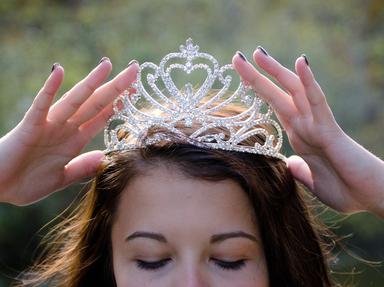Quiz Answer Key and Fun Facts
1. Charlotte Louise Juliette Louvet was born illegitimately in 1898, but became a princess a few months before her 21st birthday when she was formally adopted by her natural father. Of which country was she installed as heir to the throne?
2. Princess Charlotte of Prussia suffered from ill-health throughout her life and in her letters described symptoms such as abdominal pain, facial blisters and dark red urine. This information has led modern researchers to conclude that she may have suffered from which illness - that was also thought to have afflicted Charlotte's 'mad' great-great-grandfather, Britain's King George III?
3. Princess Charlotte of Belgium became known as the Empress Carlotta when Napoleon III appointed her husband to the position of Emperor of which country in 1864?
4. Princess Charlotte of Clarence was the first of four grandchildren of Britain's King George III who were born in 1819, including her first cousin, the future Queen Victoria. However, she had a tragically short life, dying in what circumstances?
5. Grand Duchess Elena Pavlovna of Russia (who was born Princess Charlotte of Württemburg in 1807) was a noted patron of the arts. Which of the following institutions did she have a role in founding?
6. Alexandra Feodorovna who became Empress of Russia on December 1st 1825, was known as Princess Charlotte of Prussia before her marriage to the future Nicholas I. In which aptly named palace was she born?
7. Princess Charlotte of Wales, the only daughter of King George IV, was named after both her grandmothers. What was the middle name that she shared with her maternal grandmother, who was also a British princess?
8. Princess Charlotte, the eldest daughter of King George III of Great Britain, was also known by which of these titles?
9. In 1744, a Princess Charlotte (who later became a British queen) was born at the Untere Schloss (or Lower Castle) in the German town of Mirow. In which German Duchy, a state of the Holy Roman Empire, was she born?
10. Princess Charlotte Amalie served as regent of the Duchy of Saxe-Meiningen for nearly 20 years in the late 18th century. During this period she was credited with 'saving' Saxe-Meiningen with which policies that wouldn't be out of place in 21st century European government?
Source: Author
Fifiona81
This quiz was reviewed by FunTrivia editor
bloomsby before going online.
Any errors found in FunTrivia content are routinely corrected through our feedback system.

